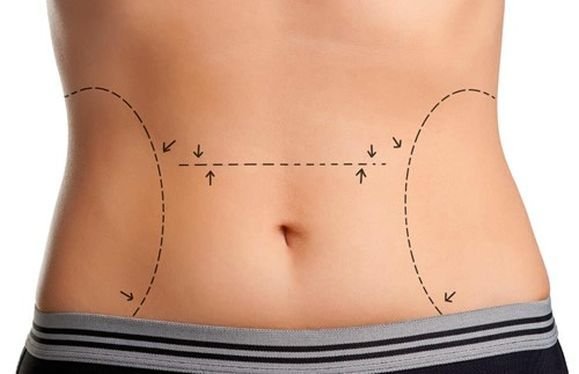Best Abdominoplasty or Tummy Tuck in Panipat is the main and most effective intervention that allows to firm the skin of the abdominal area, to reshape the lower abdomen, and to redefine the waistline.
Who undergoes the surgery
The ideal candidate for the abdominoplasty in Panipat is a patient in good health who has an excess of skin and adipose tissue in the abdominal area, often following a sudden weight loss, which tends not to improve even with adequate physical activity. In addition to a skin cosmetic defect, there is often a blemish linked to the laxity of the rectus abdominals, which after childbirth sometimes struggle to reposition themselves correctly, giving the abdomen a no longer toned appearance.
The surgery allows to correct both the skin redundancy and the bad positioning of the abdominal muscles, restoring a correct skin and muscle tone of the abdominal area, thus redefining the waistline and significantly improving the patient’s silhouette.
Surgical technique
To perform a good lifting of the abdominal wall and correct the muscle fascia, it is necessary to make a supra-pubic incision that continues laterally towards the iliac crests and an incision that falls inside the navel. In this way the skin and excess fat between the pubis and the navel are removed, also eliminating the stretch marks that may be present in this area, and any scars that may be caused by previous operations.
If the abdominal muscles are spaced apart due to previous pregnancies or operations, it is possible at this stage to bring them closer to the midline. This technical measure allows to obtain a more modeled and more functional belly with a feeling of greater well-being after the procedure of tummy tuck in Panipat.

The scars
The scars that follow from this surgery are: a low horizontal scar, just above the pubis, and a scar inside the navel.
Initially red scars will tend to lighten over time and blend in with the surrounding skin. The goal of the plastic surgeon in Panipat is to position the scars in such a way that they are completely covered by a slip.
Anesthesia
The anesthesia used for the best abdominoplasty in Panipat is in most cases the general one, although for a limited surgical correction, called mini-abdominoplasty, it is possible to perform the surgery under local anesthesia with sedation. Operational times vary from an hour and a half to approximately three hours.
After the surgery
At the end of the surgery, an elastic dressing is applied which has a containing purpose and helps the tissues settle. At the time of discharge, this dressing is replaced with a lighter one and an elastic sheath is worn. The compression dressing has the purpose of promoting tissue healing, reducing edema and the formation of abdominal seromas, as well as protecting the reconstructed muscle structure from excessive stress. It is advisable to continue wearing it for the first month after the surgery, avoiding excessive effort.
The patient is discharged with the prescription of antibiotic therapy and in the first days bed rest is recommended.
The post-operative
A feeling of tenderness and tension in the abdomen may be present in the first few days. In the first 2 days it is easy for the temperature to rise a few lines (37-37.5 ° C).
Mild bruises may appear which will disappear within 2 weeks. After three days the drains are removed, at 1 week a control dressing is provided and after 2 weeks the stitches are removed.
As a result of the edema, that is, the normal swelling that remains after surgery, the abdomen may appear slightly swollen immediately after surgery. It can sometimes take several weeks for the swelling to completely resolve and the result of the surgery to be optimal. Scars should be protected from sunlight for the first 6 months after surgery. To speed up the reabsorption process of postoperative edema, it may be useful to perform cycles of lymphodrenanated massages and radiofrequency treatments.
Possible complications
The specific complications of the best tummy tuck in Panipat are rare and mainly represented by bleeding, hematoma, seroma, infection and pathological scarring.
- Hematoma: can arise in the first 12-24 hours after surgery, it is limited by the presence of drains.
- Seroma (collection of serous fluid between the abdominal wall and the skin): can occur in overweight patients and resolves when the fluid escapes through a section of the surgical wound.
- Skin necrosis: it can occur, albeit rarely, after large abdominoplasty and in smokers: it may require daily medications even for several weeks. It results in delayed healing and poor quality scarring.
- Skin scars are generally not very visible: their extent depends on the defect to be corrected; their quality depends on the care taken in the execution of the sutures and on the individual skin reactivity.
- Hypertrophic scars (red and raised): can develop unpredictably in patients with excessive skin reactivity or in case of wound infection. They will be treated with specific ointments and possibly with cortisone infiltrations


